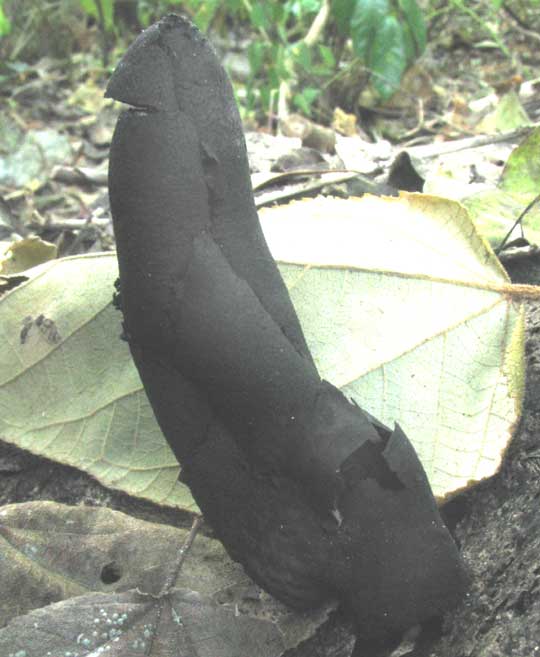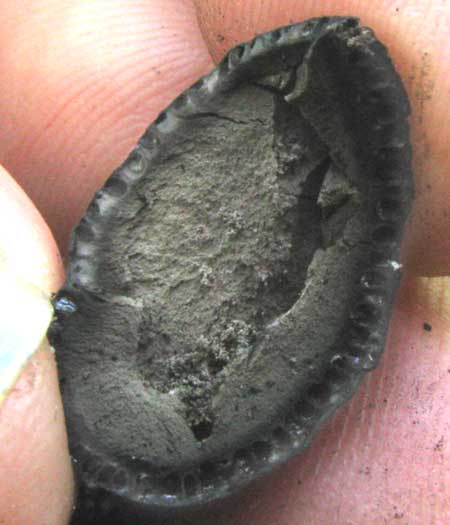Excerpts from Jim Conrad's
Naturalist Newsletter
from the January 22, 2012 Newsletter issued from Hacienda Chichen Resort beside Chichén Itzá Ruins; limestone bedrock; elevation ~39m (~128ft), N20.675°, W88.569°; central Yucatán state, MÉXICO
DEAD-MAN'S FINGERS
On the same moldering pile of firewood on which we've found slime molds and a germinating Catasetum orchid with white roots, there's the curious object shown below:

At the end of the rainy season the object was firm and smoothly surfaced. Then it became hard and brittle, and nowadays it's collapsing upon itself, with its "skin" splitting and cracking as shown. It stands 2.8 inches tall, (7cm), is hairless and grows from disintegrating wood.
This is a Dead-Man's Finger, XYLARIA POLYMORPHA, a member of the Ascomycetes. Actually, the polymorpha needs to be in quotation marks because the species' taxonomy is so poorly understood that there's a good chance it's not really the polymorpha species. However, at this time, for us non-experts, that's the best name to use. As Michael Kuo at MushroomExpert.Com says of this group, "Even with identifiable specimens in hand, there is no getting around the fact that microscopic analysis is frequently necessary for accurate Xylaria identification -- which leads many collectors to label their collections of fat specimens "Xylaria polymorpha" and their skinny collections "Xylaria hypoxylon," since these are species frequently included in field guides. Ours is "fat."
A cross section view of our Dead-Man's Finger -- the whole thing is technically known as a stroma -- is shown below:

If that were a puffball, which is a fungus in a completely different phylum, I'd interpret the spongy material constituting nearly all the interior as tissue that later would mature into a mass of spores. However, these are Ascomycota fungi that produce spores stacked in a single row inside microscopic tubes called asci (singular ascus) packed closely side by side. The spores are shot from the ascus tips.
On the Internet I learn that the stroma's "filler material" in the above photograph is known as pseudoparenchyma. It serves as a storage reserve of nutrients and water. The little cuplike items along the perimeter are perithecia. The insides of the perithecia are lined with microscopic, spore-bearing asci stacked closely side by side.
Members of the genus Xylaria decompose wood or plant debris. It's typical for the stromata (plural for stroma) to become black and hard at maturity, like charcoal.